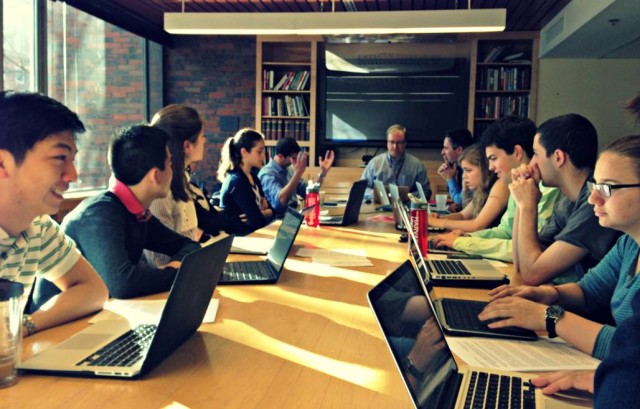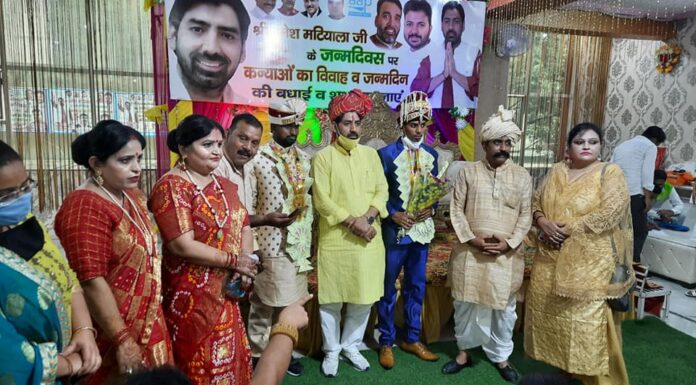There is a famous Chinese proverb: “If you are planning for a year, sow rice; if you are planning for a decade, plant trees; if you are planning for a lifetime, educate people.”
Hence, education is not a luxury…it is a basic necessity of life, which sadly enough, is not something we have been able to provide to every citizen. While our ambitious ‘Right to Education’ Bill aimed to bridge this gap by making education compulsory for children, the truth is, the education sector in India – be it primary education or higher education – is in need of some serious reforms (especially in terms of quality).

One such reform envisioned is by allowing foreign universities [of repute and excellence] to set up shop in India. Of course, as with all things “foreign”, this step is being viewed with a lot of trepidation. This isn’t really surprising given the “East India Company hangover”, which we all still suffer to this date. This is a culmination of the socialisation process, where we are taught (since school) that the Indian occupation at the hands of the British crown was a result of a “foreign trading company”, called East India Company. Since then, there is this inherent suspicion when it comes to anything foreign. And this debilitating fear is what has prevented us from making strides in opening our doors to foreign universities.
Now that we have understood the “founded/unfounded” source of this fear, it is time to put it into perspective. What the socialisation process has missed out in its teaching is that when the East India Company landed on India’s soil, the country was not a unified whole. It was fragmented into territories, which were ruled by warring kings (with independent and individual armies), who were so concerned in safeguarding their own interests that they failed to see the larger interest of the people or society. It isn’t rocket science: “When there’s no nation, there’s no nationalism either.” And thus we forfeited our freedom to the foreigners.
That is no longer the case today. We are a unified country. We are a democracy. We are a nation. No foreign university has the power to threaten our survival. Why? Because it is simply not possible. If the foreigners made trouble, wouldn’t we just beat them into a retreat? This, of course, is hypothetical (just to pacify the fears of a large vocal majority that is questioning the move).
The truth, whether you want to believe it or not, is that ever since we opened our doors in 1991 with the ‘LPG’ framework [Liberalisation, Privatisation, Globalisation], the country has witnessed a spurt of growth that promises to make us a superpower. And that is what is envisaged with the coming of foreign universities to our country.
It is also important to point out here that when we speak of foreign universities, we are speaking of institutes of excellence. The government is certainly not intending to let every Tom, Dick and Harry’s university to set up a campus and start handing out degrees like Santa Claus.
Whether it was UPA-1 or UPA-2 or even Modi’s ‘Make in India’ campaign that seeks to revolutionise the country’s higher education sector, the government’s vision is to make available a world-class education at a fraction of cost.
While the UPA-1 tried to push the bill that would allow foreign universities in India, the initiative never saw the light of day owing to the opposition of the Left parties that were the ruling coalition. Similarly, when UPA returned to power, the UPA-2 too tried to push the Foreign Education Providers (Regulation) Bill, which of course did not come to fruition (reason: “coalition” politics). Hence, the government decided to circumvent this logjam by issuing an executive order that permitted foreign universities of “excellence” to set up campuses in partnership with domestic education providers.
In fact, between 2000 and 2010 , we have witnessed a five-fold increase in the number of foreign institutions in India. As of 2010, the number of foreign education providers operating in India stood at 631, of which 440 were functioning from their home campuses, while 137 were collaborating with their Indian counterparts.
Our current Prime Minister Narendra Modi’s “Make in India” campaign seeks to draw foreign investment in education. It not only means infusing millions of dollars into our economy, it will actually help us save about $4 billion in foreign exchange. How? This is the money that our students spend when they go abroad to study in foreign colleges.
In addition to monetary gains, we also stand much to gain through the process of reverse brain drain. At the moment, more than 250,000 Indian students are studying abroad…if we are able to retain half that number, we would have taken a huge step towards retaining capable hands and brilliant minds. In addition, the presence of foreign universities will provide a much-needed competition to the Indian counterparts – making them work towards improving courses and pedagogy; and hopefully will provide the much-needed impetus for carrying out research, which has been seriously lacking from the Indian academia.
Moreover, these foreign universities will address a serious gap in our higher education sector, which is basically a problem of demand and supply. With some of the best ivy-league colleges waiting in the wings to set up shop in India, we are indeed looking at a complete overhaul of the Indian higher education sector. This is because mechanisms will be set in place to ensure that only quality education (by institutions of excellence) is delivered to the Indian student at a fraction of the cost mind you…of what you would otherwise end up paying for their courses abroad. This is so that we do not become a dumping ground for dubious degrees. With so many safeguards in place, do you still feel unsafe? I hope not!


























